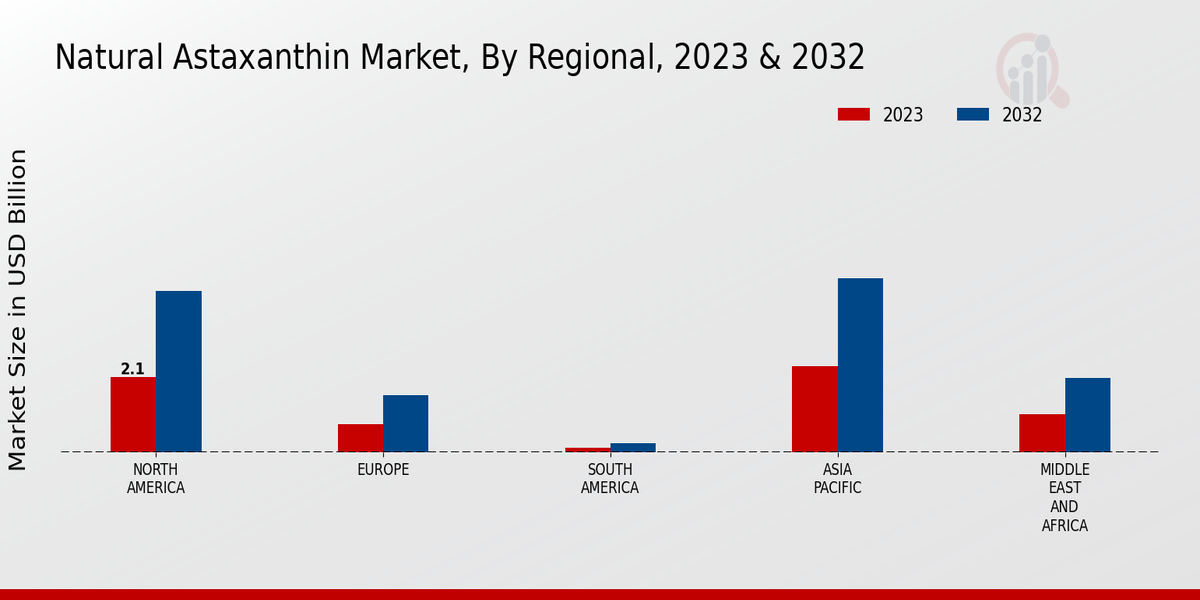Natural Astaxanthin Market Summary
The global natural astaxanthin market is projected to grow significantly from 4.27 USD billion in 2024 to 10.60 USD billion by 2035.
Key Market Trends & Highlights
Natural Astaxanthin Key Trends and Highlights
- The market is expected to experience a compound annual growth rate of 8.62 percent from 2025 to 2035.
- By 2035, the market valuation is anticipated to reach 10.6 USD billion, indicating robust growth potential.
- in 2024, the market is valued at 4.27 USD billion, laying a solid foundation for future expansion.
- Growing adoption of natural astaxanthin in dietary supplements due to increasing health awareness is a major market driver.
Market Size & Forecast
| 2024 Market Size | 4.27 (USD Billion) |
| 2035 Market Size | 10.60 (USD Billion) |
| CAGR (2025-2035) | 8.62% |
Major Players
DSM (Switzerland), Kyowa Hakko Bio Co., Ltd. (Japan), JX Nippon Oil Energy Corporation, Solarbio Life Sciences, Nutrex Hawaii, FMC Corporation, Phyton Biotech Inc., RAHN AG, Kemin Industries, Inc., Valensa International, Fuji Chemical Industry Co., Ltd., Algalif, Cyanotech Corporation, AstaReal

















